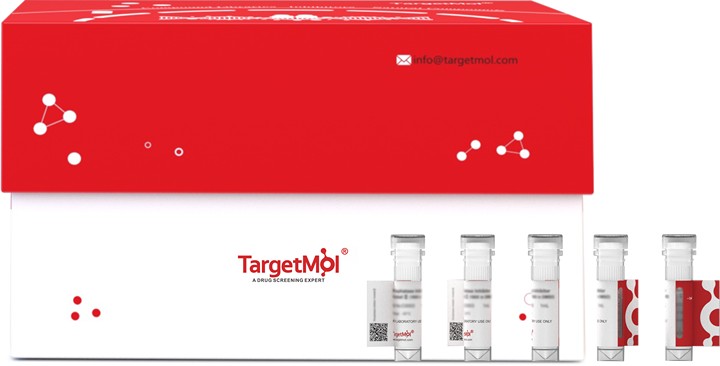Shopping Cart
- Remove All
 Your shopping cart is currently empty
Your shopping cart is currently empty

IL-6 Protein, Rabbit, Recombinant (His) is expressed in yeast with N-6xHis tag. The predicted molecular weight is 26.4 kDa and the accession number is Q9MZR1.

| Pack Size | Price | Availability | Quantity |
|---|---|---|---|
| 20 μg | $397 | 20 days | |
| 100 μg | $845 | 20 days | |
| 500 μg | $1,950 | 20 days |
| Biological Activity | Activity has not been tested. It is theoretically active, but we cannot guarantee it. If you require protein activity, we recommend choosing the eukaryotic expression version first. |
| Description | IL-6 Protein, Rabbit, Recombinant (His) is expressed in yeast with N-6xHis tag. The predicted molecular weight is 26.4 kDa and the accession number is Q9MZR1. |
| Species | Rabbit |
| Expression System | P. pastoris (Yeast) |
| Tag | N-6xHis |
| Accession Number | Q9MZR1 |
| Amino Acid | FPTSAPVREDSNTKASPDKTLTPPGRTIESIRSILETIKELRKEMCDHDVNCMNRKEALAEVNLHLPRLIEEDGCFPPAVNNETCLLRITSGLMEFRMYLEHLQAKFRSDEENTRVSMVLKNIQHLIKTLRPKVKNLNEEATLKPAVAVSLMENLQQKNQWLKTTTIHFILRGLTNFLEFTLRAVDLMECGCPCLRNFMGSASHGQNTPSCPLDT |
| Construction | 27-241 aa |
| Protein Purity | > 90% as determined by SDS-PAGE. |
| Molecular Weight | 26.4 kDa (predicted) |
| Endotoxin | < 1.0 EU/μg of the protein as determined by the LAL method. |
| Formulation | Tris-based buffer, 50% glycerol |
| Reconstitution | A Certificate of Analysis (CoA) containing reconstitution instructions is included with the products. Please refer to the CoA for detailed information. |
| Stability & Storage | Lyophilized powders can be stably stored for over 12 months, while liquid products can be stored for 6-12 months at -80°C. For reconstituted protein solutions, the solution can be stored at -20°C to -80°C for at least 3 months. Please avoid multiple freeze-thaw cycles and store products in aliquots. |
| Shipping | In general, Lyophilized powders are shipping with blue ice. Solutions are shipping with dry ice. |
| Research Background | Cytokine with a wide variety of biological functions in immunity, tissue regeneration, and metabolism. Binds to IL6R, then the complex associates to the signaling subunit IL6ST/gp130 to trigger the intracellular IL6-signaling pathway. The interaction with the membrane-bound IL6R and IL6ST stimulates 'classic signaling', whereas the binding of IL6 and soluble IL6R to IL6ST stimulates 'trans-signaling'. Alternatively, 'cluster signaling' occurs when membrane-bound IL6:IL6R complexes on transmitter cells activate IL6ST receptors on neighboring receiver cells.; IL6 is a potent inducer of the acute phase response. Rapid production of IL6 contributes to host defense during infection and tissue injury, but excessive IL6 synthesis is involved in disease pathology. In the innate immune response, is synthesized by myeloid cells, such as macrophages and dendritic cells, upon recognition of pathogens through toll-like receptors (TLRs) at the site of infection or tissue injury. In the adaptive immune response, is required for the differentiation of B cells into immunoglobulin-secreting cells. Plays a major role in the differentiation of CD4(+) T cell subsets. Essential factor for the development of T follicular helper (Tfh) cells that are required for the induction of germinal-center formation. Required to drive naive CD4(+) T cells to the Th17 lineage. Also required for proliferation of myeloma cells and the survival of plasmablast cells.; Acts as an essential factor in bone homeostasis and on vessels directly or indirectly by induction of VEGF, resulting in increased angiogenesis activity and vascular permeability. Induces, through 'trans-signaling' and synergistically with IL1B and TNF, the production of VEGF. Involved in metabolic controls, is discharged into the bloodstream after muscle contraction increasing lipolysis and improving insulin resistance. 'Trans-signaling' in central nervous system also regulates energy and glucose homeostasis. Mediates, through GLP-1, crosstalk between insulin-sensitive tissues, intestinal L cells and pancreatic islets to adapt to changes in insulin demand. Also acts as a myokine. Plays a protective role during liver injury, being required for maintenance of tissue regeneration. Also has a pivotal role in iron metabolism by regulating HAMP/hepcidin expression upon inflammation or bacterial infection. Through activation of IL6ST-YAP-NOTCH pathway, induces inflammation-induced epithelial regeneration. |

Copyright © 2015-2025 TargetMol Chemicals Inc. All Rights Reserved.